Understanding what is a design brief for your UX design project can help you create one to save time and resources.
When you commission a design project, regardless of the industry it is in, it is important to communicate all the important details about the project to the designing team to ensure that the project goes smoothly and brings the desired results within the decided timeframe. A design brief ensures that this information is communicated well to both parties, the client, and the design team.
A UX brief is a document stating all the necessary information a UX design agency may need to start working on a project. Imagine you want a design agency to help you design a product, without the UI/UX design brief, the project will not be clearly defined and it may also suffer from miscommunication, missed deadlines, inconsistent deliverables, and poor results.
To be able to understand it better, let’s elaborate on it a little.
What is a Design Brief?
For UX designers to start working on a project, they first need a set of information that will help them understand the different aspects of the project. A design brief helps gather all this information in one document so that the information shared within is consistent for everyone involved, including the client.
“Design brief helps me understand the project in-depth so that I can plan and prioritize my work accordingly.” — Adisha Mandlik (UI Designer, Yellow Slice).
Without a creative brief, you do not have a clear roadmap of how the project is supposed to advance leading to confusion in communication, longer project timelines, exceeding the budget, and unaligned expectations & deliverables. More importantly, it may end up bringing your substandard results despite the amount of money, time, and talent spent on the project.
The initial design brief is provided by the client or is created by the one leading the project or the design team keeping all the key stakeholders in the loop. The brief for UI/UX design needs to be carefully created to ensure that all the critical information about the project is added to it.
That said, a UX design brief is different from something called a design specification.
| A design specification is a document specifying what elements and design components need to be present in the UI, including, colors, fonts, brand logos, and more. |
Why is a Design Brief Important?
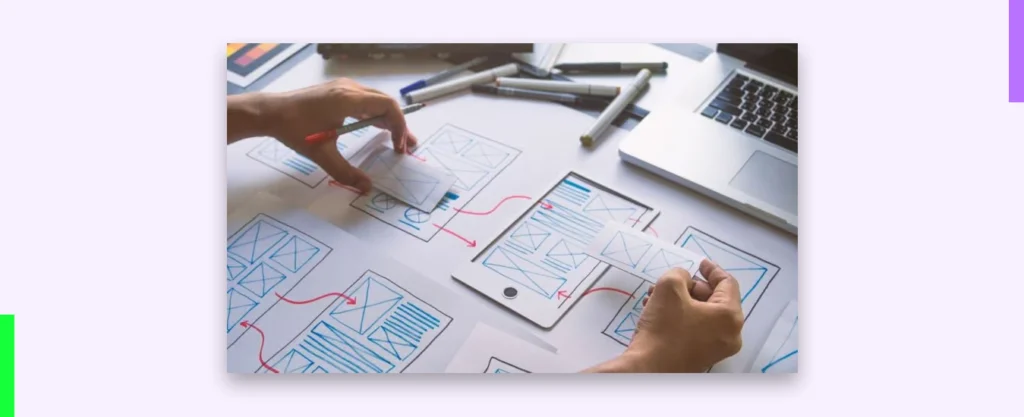
“Design briefs help keep track of what the goals and requirements of the project are, for us to keep checking if we are aligned with what needs to be achieved moving forward with the project. (By) Doing this we can ensure successful projects.” — Anthony Fernandes (UI Lead, Yellow Slice
Having a UI/UX design brief helps you start your project with better clarity of what is to be achieved, in how much time, and within what budget. Without it, you could be shooting an arrow in the dark while losing your precious resources.
It helps you aptly convey all your requirements and expectations to the design agency. This will ensure that you don’t have to constantly go back and forth over what is decided.
For the design agency, the document helps them understand the project well, whom they are targeting with their designs, how soon the client expects the deliverables, what are the goals of the project, and what deliverables the client expects.
With a comprehensive UX brief, you can track the progress of the project with concern to the deadlines decided for each task. Some of its other benefits include:
- Faster project advancement
- Optimal use of time and resources
- Less to no confusion
- Easier project tracking
- Clarity on deliverables
- Better product quality
How is a UX Project Brief Helpful for Designers?
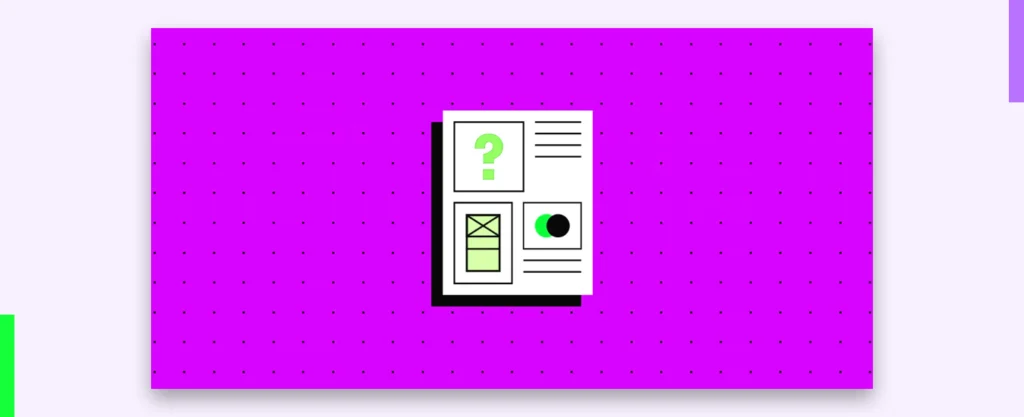
While talking on the topic of UX brief, Yellow Slice UI designer, Bhupendra Nipane elaborately explains the importance of a design brief for UI/UX designers and how it helps them to save their time, resources, and efforts.
He states,
- In most cases, a Design brief (if thoroughly written/conveyed by the client) contains the most crucial information that a designer would need to get started with the project.
- It contains requirements like theme/style, color choices (at least tone like light/dark) & font style.
- If a client likes some design that is already there in the market & if he has mentioned it beforehand, it helps the designer narrow down the options which are aligning with the project requirement.
- Sometimes, the client shares what he doesn’t like or doesn’t want us to waste time on something specific. It helps to stay on track.
- It helps the designer to be on the right track & not deflect which in turn would waste both clients’ and designers’ money & time.
- It also helps in deciding the brand’s vision and what they are trying to communicate with this product.
- It helps in deciding the target audience which in turn helps the designer to design the product in a specific way that the product will cater to all possible audiences.
- Taking into consideration the new digital boom and awareness of design, daily new design trends are coming to market. If a client is well aware of his required style/theme then, the designer doesn’t have to waste time on figuring out these things.
How to Write a UX Design Brief
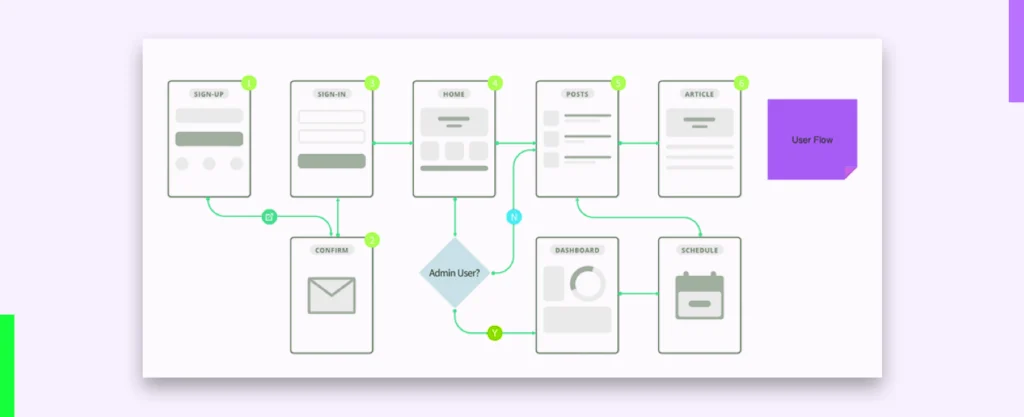
If you are a business wanting to get a design agency to design the UI/UX for your product, then writing a design brief is a must. That said, if you approach an experienced design consulting firm, then they too will help you craft the brief for your project.
To write a project brief, it is necessary to understand what information the designer needs. At times, if a client forgets to add any important information in the brief, it becomes the designer’s job to ask them these questions.
“The first thing we need to know when designing the UI of a project is if the client already has any company guidelines like the brand color or font that they want to use in the UI. Next, we ask if they have any existing product or product element that interests them. This information helps us understand what the client is looking for. Based on it, we create our UI design mood board.” Explains Ishwari Kaisare, a UI designer at Yellow Slice.
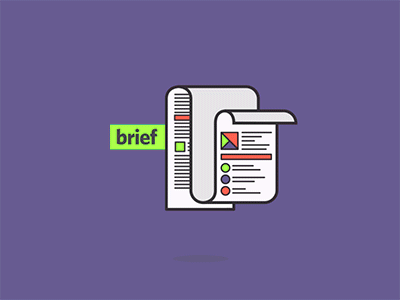
Regardless, it is useful to know what is included in a design brief. So, here is a list of topics that are usually addressed in a UX creative brief.
- Project overview with company background
- Problem Statement
- Scope of the project – what is included and what is not.
- Target audiences and users
- Budget and schedule to define deadlines
- Deliverables (types and formats)
With this information, it becomes pretty clear what the project is and how the designers are supposed to take it further (and in which direction).
Fun Fact: Rookie designers can use an online UX design brief generator to build their portfolios and improve their design skills.
Let’s look at all the topics one by one to understand what each of them comprises.
#1 Project Overview with Company Background
This section answers the most important question, “What is the project all about?” Paired with the company background, you can get a pretty solid idea of what needs to be done for the UI/UX project.
In this section, clients also mention whether the project is a redesign or something that the designers need to create from zero. It also introduces the design team to the client’s business values and identity may need to be reflected in the product.
#2 Problem Statement
This is where you need to define the problem that the product is supposed to solve. These could be marketing objectives like attracting new users, increasing conversion rates, improving engagement rates, and so on.
Defining your problem along with your objectives and goals helps the UX designer create design strategies accordingly.
#3 Scope of the Project
This section defines what the designers are and aren’t supposed to do within the entire project. Letting them know this not only helps clarify the tasks but also removes any miscommunication that may lead to wasting time on unnecessary things.
#4 Target Audiences and Users
This is where you discuss the audience groups your product is going to target. The target audience attributes like demographics, likes & dislikes, any particular online behavior, and similar give the UX designer an idea of whom they are designing for. Share any user research that you may have done previously to help the team understand its target users better.
If you are going to design the product from scratch, this data will also be useful in UX research and later on for usability testing as well.
#5 Budget and Schedule
The design team can help you cover the project within your budget if they know it. Hence, mentioning your budget in the UX brief is imperative. Similarly, based on the project milestones, deciding the schedule is also important.
Instead of deciding on the complete project’s deadline, it is more reasonable to set timelines for each of the project’s milestones. This way, it is easy to track the progress of the project based on the tasks that need to be completed. It also helps you understand the amount of work so that you can agree upon realistic project timelines.
#6 Deliverables
Mentioning your project deliverables with their types and formats will ensure that you don’t miss out on any important report or project element. This includes any raw files that you may need, image files for project promotion on social media channels or wireframes, usability test reports, and prototypes.
The project deliverables can be helpful in case you plan to redesign your product in the future (with changing times and trends, it might be inevitable).
UI/UX Product Design Brief Template
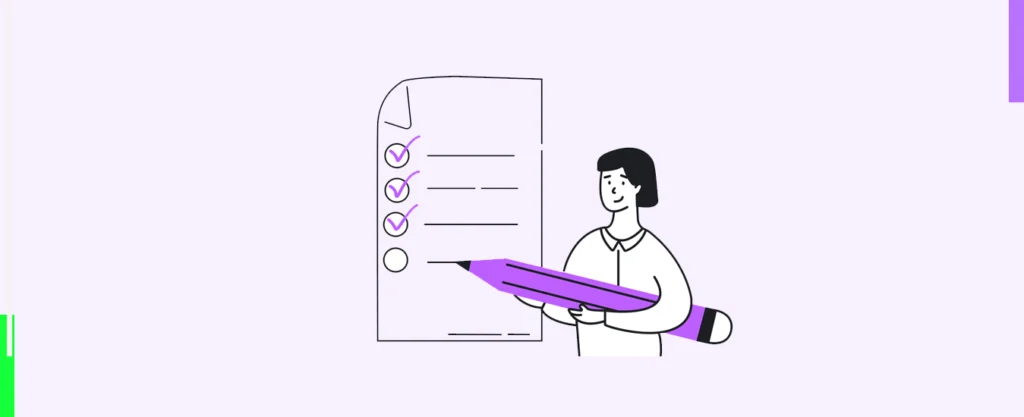
Now that you know what to include in your UX brief, allow us to further simplify things for you. Here’s a UI/UX design brief template that you can use to create your own brief for your next UX project.
Project Name:
Basic Information
Company Name:
Client Name & Position:
Contact (Phone & Email + Time Zone for International Clients):
Company Overview
(What the company does, what industry it belongs to, what its values are, what user problems it aims to solve, etc.)
Project Overview
(What is this project about? Is it for a new product or a redesign? If it is a redesign, what design elements will be provided?)
Project Goals & Objectives
(What do you intend to achieve at the end of the project? What do you want your product to achieve?)
Scope of the Project
(What is to be designed? What parts are not included in the project scope?)
Target Users
(Who does your product target or who are the end users of your product? Are there any user research data collected to back you up?)
Competitors
(Who are your product or company’s direct and indirect competitors? How is your product different from your competitors?)
Design References
(Do you already have a design in mind? Share the reference links in this section.)
Style Guides
(What style guide should the designers use? This could be something already made for another product or yours or from previously created mockups, and so on.)
Technical requirements
(What backend infrastructure do you use? Design file formats and versions? Any other technical specifications?)
Timelines & Schedule
(When do you want the project to start? When are you planning to release the product? Add milestone-wise deadlines.)
Budget
(Specify the project budget, task-wise or for the entire project. You may also mention if you have any third-party investors.)
Deliverables
(List of files, reports, and other tangible assets that you need on the completion of the project.)
Key Stakeholders
(Name, designations, and contact information of key people involved in the project from the client side, you can also mention the final decision-maker/s here.)
This brand design brief template includes all the important details that you need to share with your design agency to create a successful project.
FAQs about Design Brief
What is the power of a UX project brief?
The YS designer Aadesh Padave says, “(UX project design brief) provides a clear understanding of the client’s needs, goals, and expectations, which helps us in the design process and ensures that the final product or design is completed as per the client’s requirements.”
So, it is safe to say that the main benefit or power of UX project briefs is that it removes any confusion, reduces the risk of errors, saves time and resources, and helps you complete the project within the budget.
What is the meaning of design briefs?
A UX design brief is a document containing all the necessary information for any UX project to start. It helps keep the project on track, reduces information uncertainty, and helps you to get your work done within the time and budget constraints.
What does a design brief include?
A UX project design brief at large includes information about the client, project, its scope, target users, competitors, style guides, project timelines, budget, and deliverables. Check out the UX creative design brief template shared above to get the details on it.
What are the 5Ws of a design brief?
To simplify the understanding of what is included in the creative brief, we remember the 5W and 1 H formula.
- What: What is the project about?
- Why: Why is the product important?
- Where: Where the product will be deployed (location, OS, or technical level)?
- When: When is it supposed to be released?
- Who: Who are the target users?
- How: How much resources will be invested in the project?
Conclusion
Writing a comprehensive design brief removes any unnecessary uncertainty within the communication that may result in going back and forth to get things done. Moreover, the document serves as proof of certain things that are agreed upon by the designers as well as the client.
In this article, we discuss what is a design brief, why it is important to create before starting the project, who creates it, and how you can write one. We also shared a template for creating your own creative project brief along with some examples from our team of UI/UX designers.
Do you have a project that needs an expert UI/UX design team?
How Can Yellow Slice Help 🚀
Yellow Slice is an award-winning design agency with a massive portfolio of working with clients from different industries ranging from Fintech and BFSI to Healthcare and Ed-Tech. Our team of expert designers will help you bring your product vision to life with the help of UI/UX solutions (they will also help you create a design brief for your project).
We ensure best practices to help you create a strong online presence. Whether you want us to design an app, desktop software, or an e-commerce platform, our UI/UX design solutions will uplift your product by reflecting your brand values through the enhanced user experience.
Schedule a quick consultation call with us and we will tell you how we can help your business. For more details about our services and projects be sure to follow us on Instagram and Twitter.
![What is a Design Brief and How to Perfect it? [With Examples from UX Experts] What is a design brief and how to perfect it?](https://www.yellowslice.in/bed/wp-content/uploads/2023/06/What-is-a-design-brief-and-how-to-perfect-it-With-Examples-from-UX-Experts-1.webp)



